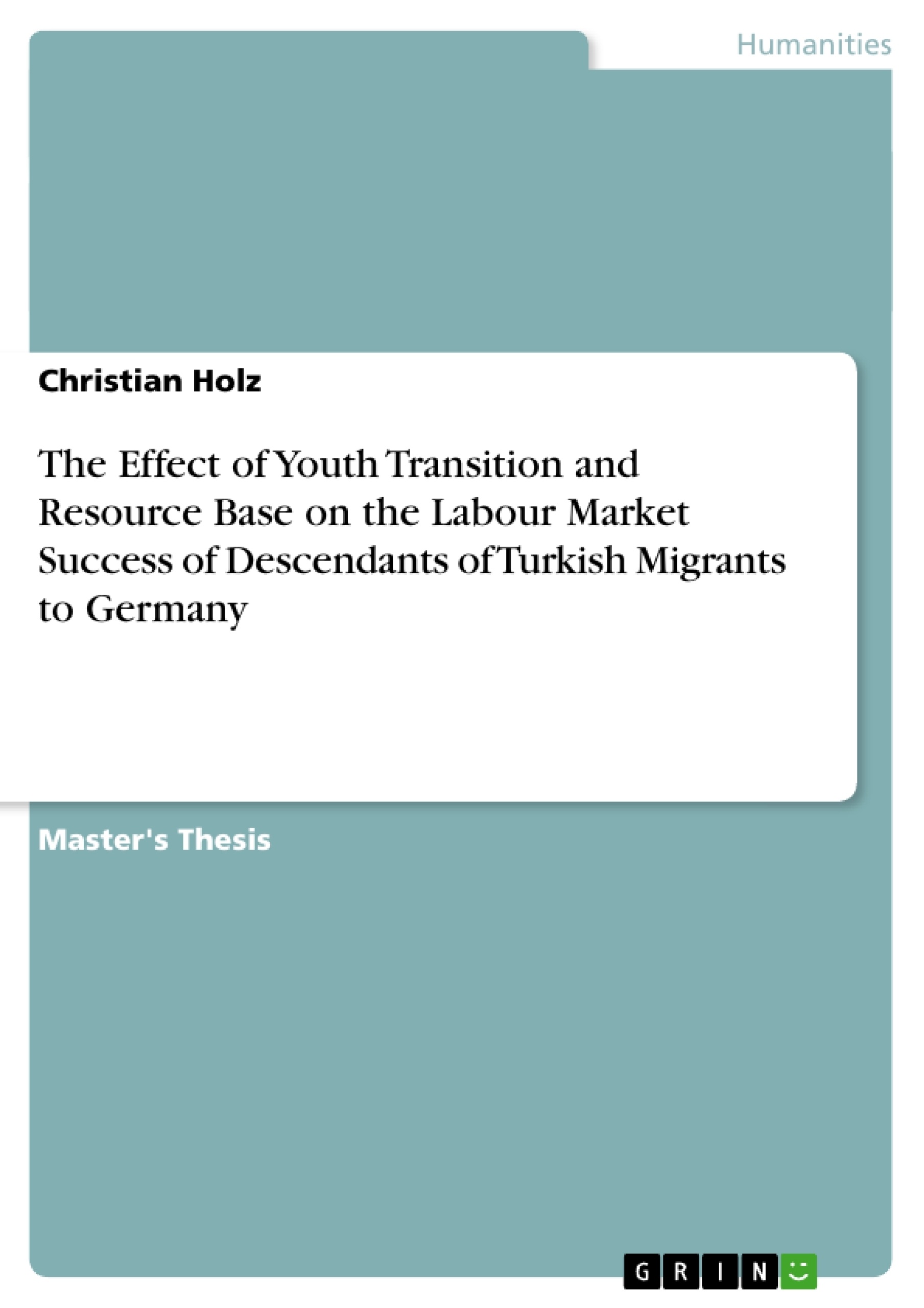Based on results from previous empirical studies, which highlighted the relatively disadvantaged situation of descendents of Turkish migrants on the labour market inGermany (compared to descendents of natives and migrants from other countries of origin), this dissertation aims to gain further insights in the underlying reasons for these disadvantages. It aims to do so by first introducing a new concept – called the‘ Resource Base’ – which is derived from elements of Bourdieu’s work on cultural and social capital as well as Coleman’s and Becker’s notes on human capital and social capital.
This concept is then used to investigate potential causes for the disadvantageous labour market positions of descendents of Turkish migrants by focusing on thei rtransitions from school to the labour market and the impact of these transitions on their individual Resource Base, as well as the impact of the Resource Base on labour market success. This investigation employs quantitative methods (logistic regression, cluster analysis and chi square tests) and a quantitative data set – the German Socio Economic Panel survey. The research also utilises graphical representation of different types of youth biographies in comparative life course charts.
Results include detailed insights into the differential acquisition of relevant resources by each group (descendents of migrants from Turkey and other countries, as well as native Germans) and the negative impact of the lack of these resources on labour market success. It is further suggested that the Resource Base model can be used to identify discrimination regulations and practices, advancing the model as a useful theoretical and analytical tool that justifies further research in this area.
Inhaltsverzeichnis (Table of Contents)
- Chapter 1 : Introduction
- Chapter 2: Human Capital, Social Capital and Cultural Capital – A Theoretical Discussion and Integration of the Different Concepts
- 2.1 The Human Capital Concept of Gary Becker.
- 2.2 Pierre Bourdieu's \"Cultural Capital”.
- 2.3 Pierre Bourdieu's \"Social Capital\"
- 2.4 \"Social Capital” in the Sociology of Gary Becker and James Coleman
- 2.5 Integration of the Concepts of Bourdieu, Becker and Coleman - The \"Resource Base\"
- Chapter 3 : The Resource Base and Youth Transitions of Offspring of Migrants and Natives in Germany – An Empirical Comparison.
- 3.1 Methodological Preliminaries
- 3.2 Setting Up The Empirical Hypotheses.......
- 3.3 Comparing Transitional Patterns Between Groups With Different Parental Migrant Backgrounds ......
- 3.4 Defining Transitional Clusters.
- 3.5 Some Interim Conclusions.....
- 3.6 Conceptualising Labour Market Success.......
- 3.7 Youth Transitions and the Composition of the Resource Base
- Chapter 4: Conclusion: How the Resource Base Model Can Help Identify Discrimination
Zielsetzung und Themenschwerpunkte (Objectives and Key Themes)
This dissertation aims to investigate the reasons for the relatively disadvantaged situation of descendants of Turkish migrants on the German labor market. It introduces a new concept, the "Resource Base," which incorporates elements from Bourdieu's work on cultural and social capital as well as Coleman's and Becker's work on human capital and social capital. This concept is then used to analyze the impact of transitions from school to the labor market on the Resource Base of descendants of Turkish migrants and its effect on their labor market success.
- The Resource Base and its impact on labor market success.
- The differential acquisition of relevant resources by different groups (descendents of migrants from Turkey and other countries, as well as native Germans).
- The influence of youth transitions on the Resource Base.
- The potential for the Resource Base model to identify discrimination regulations and practices.
Zusammenfassung der Kapitel (Chapter Summaries)
Chapter 1 introduces the research question and provides an overview of the dissertation. Chapter 2 discusses the theoretical foundations of the Resource Base model, integrating concepts of human, social, and cultural capital from different scholars. Chapter 3 presents the empirical methodology used to analyze the Resource Base and its impact on youth transitions and labor market success. It compares the Resource Base composition and labor market outcomes of descendants of Turkish migrants, migrants from other countries, and native Germans.
Schlüsselwörter (Keywords)
Key terms and concepts of this dissertation include the Resource Base, human capital, social capital, cultural capital, youth transitions, labor market success, discrimination, descendants of Turkish migrants, and the German Social Economic Panel survey.
- Quote paper
- B.A., M.Phil. Christian Holz (Author), 2005, The Effect of Youth Transition and Resource Base on the Labour Market Success of Descendants of Turkish Migrants to Germany, Munich, GRIN Verlag, https://www.grin.com/document/85329



